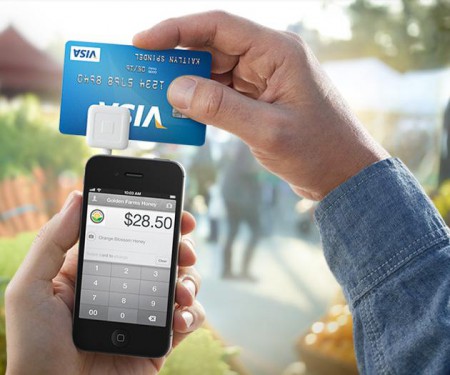 The intersection between digital, social and physical experiences.
The intersection between digital, social and physical experiences.
I recently met up with friends for dinner and a movie. I booked the dinner and paid via my smartphone; booked the movie and picked up the tickets via my smartphone; bought a coffee after the show, and you guessed it, paid with my smartphone. I did not pull out my wallet the entire night!
These days you can swipe, tap, insert, and scan to complete your purchases. We are slowly moving from completing our transactions with cash or cards to mobile. According to AskingCanadians, 11 per cent of Canadians made a purchase on their mobile device in 2012, which is an increase from the year before.
The question is; when will it tip? When will the majority of consumers start leaving their wallets at home and start using their smartphones instead of cash or cards?
Will NFC tip mobile payment?
A recent article in the Harvard Business Review reported that more than 100 million phones with Near Field Communications (NFC) will be shipped in 2013. Samsung, Sony, Google and Nintendo are all working on NFC-enabled smartphones, televisions, and appliances. Just this past month RIM announced that Visa has approved its Secure Element Manager (SEM) solution for NFC to allow consumers to make purchases from their smartphones and have them charged directly to their credit card.
I’m not suggesting that NFC alone will be the tipping point that has every consumer leaving their wallet at home. After all, tap-and-go (a.k.a. wave-to-pay or tap-to-pay) NFC card technology is nothing new and studies point to the fact that it accounts for less than 10 per cent of all the cards in circulation. And there are lots of reasons why—security concerns, consumer awareness and merchant adoption to name a few. I would argue there is another reason, the end user experience. We live in a world of information overload and too many options can often create a poor customer experience. (Do I insert, tap or slide to pay?)
However, NFC-enabled devices (smartphones, appliances, point-of-sale, etc.) can provide something that cards cannot. You can tap to download an app, a song, contact information or any other type of value-added content. Mobile can bridge the gap between digital and physical experiences beyond just purchasing products.
The bigger issue is the experience gap
According to AskingCanadians, the greatest barrier to mobile shopping at present is ease of use. Twenty-five per cent of Canadians agree with the statement, “I am likely to shop via my mobile device, provided the process is easy.”
From a customer experience perspective, it really does start with the end retailer providing a succinct experience. Square is an example of that. What’s Square, you ask? It’s a tiny credit card reader shaped like a white plastic square that connects to an iPhone, iPad or Android device and—together with an app—allows anyone selling a product or service the ability to accept credit card payments on the spot. It’s great for businesses selling anything, from singing lessons to paintings to cookies at a school bake sale. The transactional process is simple and is completely mobile.
As I stated earlier, there are many, many ways in which a consumer can purchase products and services. Square is simply another alternative. However, we can learn a lot from the user experience Square has designed. Too often current mobile experiences are just versions of desktop websites designed for big screens that don’t move with you.
But if we can get the mobile experience right, then I believe everyone will be leaving their wallets at home.
[Photo credit: Square]
One Response
Comments are closed.